Podcast: Play in new window | Download (Duration: 19:07 — 20.2MB)
Subscribe: Apple Podcasts | Spotify | Amazon Music | Android | Pandora | iHeartRadio | JioSaavn | Podcast Index | Email | TuneIn | RSS | More
By Davy Crockett
![]()
![]()
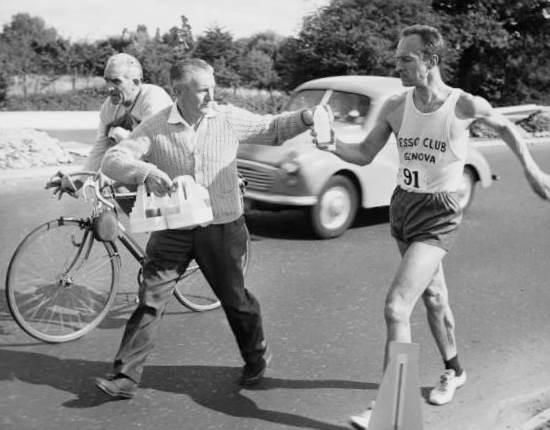 The fifty-mile race is a distance most of today’s ultrarunners eventually run. In 2017 there were about 300 50-mile races held in America with about 16,000 unique finishers. At nearly twice the distance of a marathon, it truly involves a different approach than running a marathon both mentally and physically. Ultrarunning legend, David Horton once wrote, “Most ultra-runners, me included, consider that real ultras are 50 miles or longer.” Since the 1960s, the shorter distances (50K, etc.) were typically used by aspiring ultrarunners to train for completing at the 50-mile distance.
The fifty-mile race is a distance most of today’s ultrarunners eventually run. In 2017 there were about 300 50-mile races held in America with about 16,000 unique finishers. At nearly twice the distance of a marathon, it truly involves a different approach than running a marathon both mentally and physically. Ultrarunning legend, David Horton once wrote, “Most ultra-runners, me included, consider that real ultras are 50 miles or longer.” Since the 1960s, the shorter distances (50K, etc.) were typically used by aspiring ultrarunners to train for completing at the 50-mile distance.
When did the 50-mile race begin? Early classic American 50-milers include: the JFK 50 starting in 1963 in Maryland, the Metropolitan 50 starting in 1971 in Central Park, New York City, the Lake Waramaug 50 starting in 1974 in Connecticut, and the American River 50 started in 1980 in California. But just as 100-mile races in America did not originate with Western States in the 1970s, the 50-miler did not originate with the JFK 50 in 1963. In all began much earlier than that.
50-milers From Long Ago
“Anciently” in 1592 a footrace of just over 50 miles was held in northern France. It was won in twelve hours by a runner from what now is southern Netherlands. In 1787, Reed, of Hampshire, England, walked 50-miles on the sands of Weymouth in a little more than nine hours. Also around that time it was said that Foster Powell, from England ran 50 miles in seven hours.
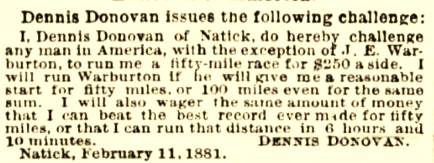

50-mile walking races


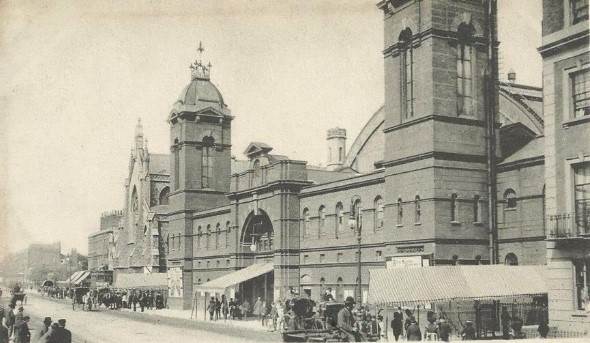

How fast could they strictly walk 50 miles? In 1877, pedestrian legend, Daniel O’Leary (1841-1933), in a 100-mile challenge match against John Ennis for $500, walked 50 miles in 8:41:30 in the Exposition Building in Chicago for an American best time. In 1878 that time was improved when William McCann of Albany New York walked a 8:36 in a solo trial walk to get ready for a high stakes challenge race. The world walking best around that time was set in 1878 by British walker, William Howes, with an amazing walking time of 7:57:41 in the Agricultural Hall in London. Buffalo, New York was the home of many walking contests including an amateur 50-miler in 1879 with seven starters. The second-place walker protested the race, claiming that the winner was seen running.
Go-as-you-please 50-milers
In 1879 “Go as you please” 50-mile events were established that allowed the competitors to run. Amateurs entered the sport around that time started to dominate 50-mile competitions. Distance “records” were divided into professional and amateur records. Races of twenty-five miles were much more common, but over the years, the 50-miles distance in England and the United States became recognized as an ultradistance standard, probably because it was a nice round number and that it was twice the common 25-mile distance. It wasn’t until the 1920 Olympics that the marathon distance (26.2 miles) became accepted formally as a competitive distance. The marathon then started to replace the 25-mile competitions. Significant fast 50-mile running performances were accomplished, enticing runners to seek after world bests. These 50-mile races continued in England and America until the mid-1930.
Notable American 50-mile Champions
Prior to 1950, there were many forgotten 50-mile runners. Here are a few notable runners from America.
Dennis Donovan – 1880, 50 miles in 6:18


Peter Golden – 1883, 50 miles in 7:29:47


Sydney Hatch – 1909, 50 miles in 6:45:28
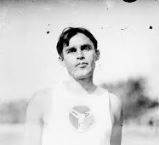

Johnny Salo – 1929, 50 miles in 6:34:55


Johnny Salo (1893-1931), a policeman, was born in Finland and was from Passaic, New Jersey. He truly was one of the greatest runners in America for his era and probably the single greatest 50-mile runner. Each morning at dawn, Salo would run 15 miles prior to his 8-mile police beat. At one time he held an obscure record, the world’s six-day relay record. Teamed up with Sammy Richman, they ran 750 miles in six days at Legion Ascot Speedway (motor car track) in Los Angeles in 1928. Salo placed second in the C. C. Pyle’s 1928 “Bunion Derby” race across America and won in all in 1929. During the 1929 race, he won a 50-mile segment from Superior Arizona to Mesa Arizona, with a blistering 6:34:55 for those approximate 50 miles. Sadly in 1931, Salo died when he was hit by a baseball on his head while managing a crowd at a baseball game.
Hugo Kauppinen – 1934, 50 miles in 6:46:10
Hugo Kauppinen (1892-1969), a Finnish-American from Brooklyn, New York, started running marathons in America, in 1920. He was small and lean, just 118 pounds. He went on to run in the Olympic marathon trials in 1920 and 1928. In 1930 he won the AAU Marathon National Championship at Silver Lake Reservoir on Staten Island with 3:00:24. In 1934, the 42-year-old Kauppinen, ran 50 miles in an annual Metropolitan 50-mile run on Staten Island. He finished with 6:46:10, shattering Peter Golden’s long standing recognized American best. But over the years his performance would be forgotten as runners still thought Peter Golden held the American record.
Other early 50-mile Races
On August 30, 1930, a 50-mile race was held in Covington, Indiana as part of the Fountain County Fair. There were 60 starters and the winner was D.S.N. Salisbury of Danville, Illinois. He won $30.


On July 20, 1941 a 50-mile race was conducted in Kansas City Missouri in front of thousands of spectators on a six-mile course in Swope Park. Five runners started and Bill Breidenthal, age 19, was the only finisher in 10:17, and he finished with a sprint. He had only brought with him a bottle of rubbing alcohol, sugar cubes, salt tablets, and a crew of three.
The 1946 Finchley 50 miler
In 1924, Norman Dack of England took up distance running. He soon immigrated to Canada and in 1930 competed in the British Empire Games in Hamilton, Canada, where he finished sixth in the marathon. As the Great Depression roared through Canada, he returned to England, joined the Royal Air Force and was stationed in London. In 1937 he ran and early version of London to Brighton and took second place demonstrating his strength running ultradistances. While in England he joined the Finchley Harriers running club. With his influence the club decided to put on the first post-war 50-miler held on a ten-mile road loop.
Fifteen runners including Dack participated in this historic 50-miler at Ruislip, London. It was a warm day with the high of 74 degrees. British distance great, Tom Richards took an early lead. Dack was five minutes down after the first 10-mile lap in fourth place. After thirty miles, Richards decided to quit at mile 30 which he reached in three hours. During the fourth loop, Dack took the lead wnet on to win with 6:51:18, breaking his own Canadian 50-mile best. The first post-war 50-miler in the world had been held. Dack returned to Canada, retired from competitive running in 1955 and died in the 1960s from a heart attack.
World Bests before 1950
How did the early American 50-mile times compare to the bests in the world at that time? In 1887, professional runner, George Cartwright of Great Britain ran 5:55:04 in London, the first to break six hours. He competed in many races in America. In 1913, amateur, Edgar Lloyd of Great Britain ran 6:13:58 at the Stamford Bridge track. This mark was considered the amateur best for many years. In 1924, Arthur Newton of South Africa ran a 50-mile split during London to Brighton of 5:38:42.
The bests by Americans were Dennis Donovan’s 6:18 in 1880, and Johnny Salo’s 6:35:55 during the Bunion Derby in 1929.
The Modern Era (1950+)
As with other ultra-distances, the 50-miler essentially disappeared during the World War II era and its resulting post-war reconstruction. But in the 1950s, the modern era of ultrarunning started to give birth, and the 50-miler reappeared. By the late 1960s the 50-mile door was opened for the every-day runners who wanted to challenge themselves. In America, this was largely due to the efforts of the Road Runner Club of America (RRCA) established in 1958, and also because of the efforts of Ted Corbitt.
London To Brighton


England took the lead in the 1950s in reestablishing ultras in general and specifically the 50-miler. The London to Brighton 52-miler (Brighton Run for short) began as an official running race in 1951. It had been a standard point-to-point challenge for both walkers and runners since the early 1930s. During a race on the Brighton Road in 1937, John Phipps Townsend ran the route in 8:37.
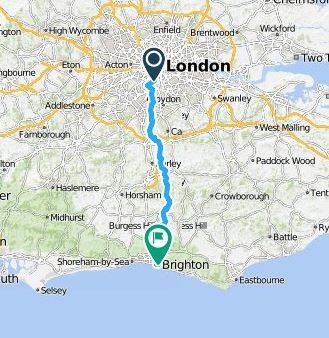

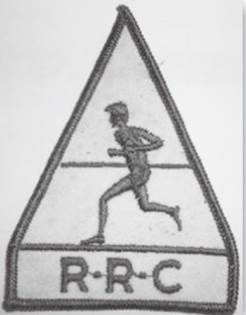

America was much slower to bring the 50-miler back. It first needed to go through England. Ultrarunning historian, Andy Milroy, wrote, “The London to Brighton race was to be a major catalyst in the development of the North American ultrarunning.”
50-milers reappear in America
In the 1950s and into the 1960s, running for fitness in America was very rare. Ultrarunning pioneer Tom Osler related that frequently he was stopped and questioned by police while running, thinking he was running to try to get away after doing some crime. Amateur distance-running athletes who grew up running in high school and college looked to the Amateur Athletic Union (AAU) to provide races, but by the late 1950s it became evident that the organization wasn’t really interested in putting on many races.
The Road Running Club of America


In 1956, Ross published a monthly magazine The Long Distance Log which in a way was a predecessor of Ultrarunning Magazine. He published race results and shared news. It had a circulation of only 126 subscribers during the 1950s, but it was the only publication devoted exclusively to long distance running in America.
When Browning Ross competed in England he joined the Road Running Club and was impressed with the way it had brought new life into the sport there. Running historian, John Chodes wrote, “The RRC of England promoted the ‘spreading of the gospel’ to the other countries. Ross became a zealous missionary.” At the time there were only nine marathons in North America with only about 300 Americans participating.
In the August 1957 issue of Ross’ Long Distance Log, Ross proposed that a national road running organization be formed, similar to the RRC of England. “Wouldn’t it be great if we could emulate the Road Runners Club of England, etc. and institute an organization with the USA with the object of encouragement of running, particularly road running?”
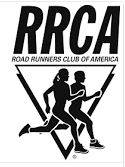

Harry Berkowitz, one of the RRCA founders at that first meeting, later wrote, “Ross had the foresight to establish an organization to get around the AAU bureaucracy and allow runners to organize races that they wanted to run.” Ross’ vision was to provide running opportunities for as many people as possible and he wanted those people to be involved in the organizing of events, not relying on the AAU to do so. This vision paved the way for today’s ultramarathons to be organized by local clubs and runners. Ultrarunning pioneer, Tom Osler said, “We runners continue to benefit from Browning’s tremendous efforts. Once Browning started the RRCA, the national mechanism was in place for running to grow by millions of runners. All that was necessary was to expand the size of the fields.”
Local RRCs started to be organized and in April 1958, the New York RRC was organized with 29 members. Ted Corbitt was elected president of the New York Chapter. It would be the most influential organization in reestablishing ultramarathons in America. Corbitt put into place the ability for ultramarathons to be reintroduced to America and bring focus on the 50-miler.
Ted Corbitt
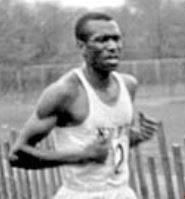

Moving to New York, Corbitt joined the New York Pioneer Club in 1947, which was the first racially integrated running organization. He trained for a year before running his first marathon in the days when hardly anyone ran them. At the age of 32, he ran his first marathon in 1951. He ran the Boston Marathon where he finished 15th with 2:48. More marathons followed that year with at least four marathons under three hours.


In 1952 Corbitt placed third at the USA Marathon Championship and qualified for the US marathon team to go to the Helsinki Olympic Games. He was the first African-American to do so. He struggled at the Olympics, crossing the finish line in 44th place, with 2:51, and was the third American to finish. He was disappointed, but his overall Olympic experience had been thrilling. In 1956 he worked very hard to qualify for the Olympics again. Corbitt was very disappointed that he missed being on the ’56 team by just one man. He ecalled, “It was like being in mourning.”
Early RRCA races
By 1959, with six chapters of the RRC, races started to be organized including national championships for 10 miles, 12 miles, and a fixed time race of one hour. On March 8, 1959 Corbitt and the NYRRC put on a 30-mile version of the hilly, pot-hole infested “Cherry Tree Marathon” plus four miles, as its first ultradistance race. Corbitt ran and won with 3:04:13. In Corbitt’s mind, establishing a 30-mile race was the first step toward establishing a 50-mile which he really wanted to run in.
In 1960, Corbitt served as the national president of the RRCA for a year and desired to expand competition beyond the marathon distance. He had a challenging year as President of the RRCA. In 1960 the AAU viewed the RRCA as an emerging threat, especially the New York chapter. The AAU flexed their muscles and refused to accept the RRCA as a participating member of the AAU, and told the RRCA to stop organizing races. They wanted the RRCA to just be a social running club. But with Ted’s leadership and influence, the issue was resolved, the RRCA pushed on, and eventually the AAU sanctioned RRCA races.
Many RRCA races started to be held. For example, before the Midwest RRC was established, Chicago had 3-4 distance races per year, but by 1961 that reached to about 20 per year because of the Midwest RRC. The first annual RRCA Marathon Championship was held that year in Atlantic City.
In 1962 Corbitt was the second American to run London to Brighton. About sixty men toed the starting line at Big Ben, and were off when it tolled 7 a.m. Corbitt started mid-pack but then accelerated to run with the leaders. At ten miles he was just two minutes behind the leader. At 20 miles he was in fourth and he reached the marathon mark at 2:45. Each runner had a cyclist handler riding near them. The cyclist could scout out the competition. At the “Valley of Shattered Dreams” Corbitt’s cyclist urged him on but Corbitt’s quads from screaming and wouldn’t let him run faster. At mile 45 was the biggest hill, “Dale Hill.” At the top, mile 46.5, he was still in fourth, about four minutes behind the leader. On the downhill, Corbitt’s cyclist yelled, “Show me what an American can do! My five-year-old sister can run faster than that!” Corbitt tried hard but just couldn’t catch the runner ahead. All the leaders struggled for the last six miles. Corbitt came in fourth with 5:53:27. He set the record for the fastest “newcomer” and was determined to return and run faster.
The 50-mile craze of 1963
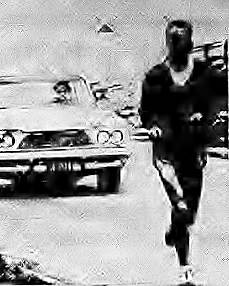

In 1963 a 50-mile frenzy occurred in America and elsewhere because of President John F. Kennedy’s 50-mile challenge to the Marines. Tens of thousands of people all over America hiked 50 miles and many claimed in the newspapers that they had set 50-mile records as slow as 12:58. The AAU was asked what the record was, and they were just as naive, stating the record was 9:29:22, set in 1887. They stated that this was the record in their AAU Handbook at the time. Unfortunately in 1938 it was decided to remove 50-mile times from books because it was not an official distance.
On February 16, 1963, a polish refugee and former University of Houston national cross-country champion, John Macy, age 32, achieved a 50-mile run in an astonishing 5:29, using pacers. At that time it was thought to be a world record by the National Track and Field Federation, but they admitted such a record has not been kept before. Macy ran from Galveston to Houston. His achievement put to rest the many false 1963 claims of 50-mile records. If you choose to accept his effort, it appeared to be the American best on the road and also faster than any American 50-mile track time, but was not a world record.
Quest for London to Brighton
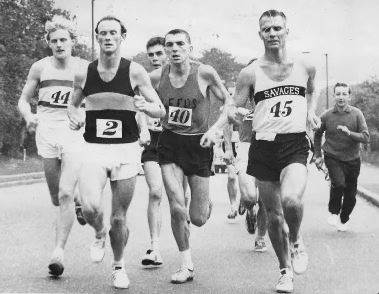

In the 1960s, London to Brighton was effectively the “World Ultra Championships,” with elite runners coming from all over the world to compete. The RRCA wanted its to participate and perform well on this world stage. Starting in December 1962, the RCCA put on ten ultras (between 30-44 miles) during the next 18 months and Ted Corbitt won all of them. He and others used these races to train and try out for the 1964 London to Brighton. That year seven Americans were in the field seeking to conquer the 50+ miles. Corbitt finished second overall in 5:40:42, just 58 seconds behind the winner.
In 1965 all of the ultras put on by the NYRRC were again geared toward getting ready for the next London to Brighton. Races included a 50K at Alley Pond Park in Queens on the ice and snow, a 45-mile London-to-Brighton tryout in Queens, a 37-5-mile Peekskill-to-Yonkers run, and two other 45-mile tryouts in Queens and The Bronx. Ted Corbitt won most of them. To make the London-to-Brighton American team, runners needed to run 45 miles in 5:15. Corbitt finished the 1965 London to Brighton in second place again, with 5:44:35, about four minutes behind the winner.
The first American 50-Mile National Championship
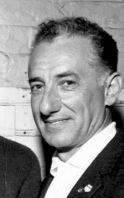

At the 1965 AAU convention held in December 1965, the chairman of the National Long Distance Running committee, Aldo Scandurra (1916-2000) proposed that the AAU sanction a national 50-mile championship in order to develop runners to compete at London to Brighton. The first US National 50 Miler was scheduled for July 17, 1966 on a road course on Staten Island, New York. Ted Corbitt planned to win the race, but in the ultra road races held in New York during the first few months of 1966, he lost some races to his new main competitor, Jim McDonagh.
Jim McDonagh (1924-2008) was born in Ireland and came to the U.S. in 1952. In 1960 he was advised by a doctor to take up jogging to lose weight off his small frame. He entered an RRC 20-miler after just a few months of training, met other runners and soon stepped up to run marathons. In 1965 he dreamed of qualifying for the 1966 London to Brighton team and used the 1965 ultras to build up his abilities.
New York was in a heat wave leading up to the 50-mile championship race day. As Ted Corbitt was packing his bag for the race, he noticed that the heat had melted the glue in his running shoes so that the sole came loose. He grabbed an old pair of leather shoes and hoped for the best.
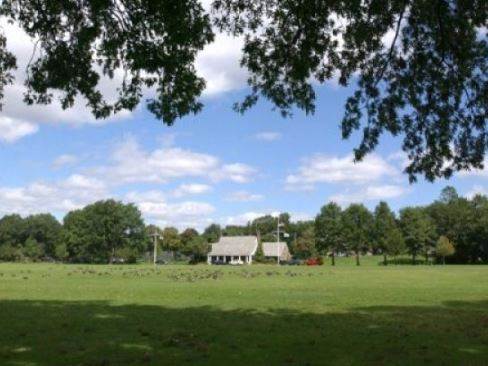

The course was on a four-mile loop around Clove Lakes Park on Staten Island. Right after the starting gun, Corbitt and McDonagh separated from the others. Corbitt ran the downhills better and could accelerate more at those points. By mile 15 it was already hot, at 80 degrees. Corbitt started developing blisters because of the old shoes but he still hit the marathon mark at 2:49. At that point It was about 85 degrees. He was still in front at mile 40 but only a few yards ahead of McDonagh. On the last loop, Corbitt crashed, with severe dehydration, and started weaving and staggering with terrible cramps. He could barely walk. McDonagh went into the lead and won the first 50-Mile championship with 5:52:27, twenty minutes ahead of Corbitt. He became known as “Shufflin’ Mac.” That year, both Corbitt and McDonagh ran London to Brighton with Corbitt fifth and McDonagh tenth.
1966 50-Mile Walton-on-Thames
On October 15, 1966, a 50-mile invitational race was conducted by the RCC of England at Walton-on-Thames. It was the 4th Balfe Cup 50 Mile Track Race, a race in England. The first was held in 1960 at Stompond Lane track, also at Walton-on-Thames and was won by Don Turner in 5:32:10. For the 1966 race, the goal was to invite runners to attack Gerald Walsh’s world record of 5:16:07 on a track. Note that Tom Richards ran a world 50-mile best on the road as a 1955 Brighton split time of 5:12:37. The International Amateur Athletics Federation still did not recognize the 50-mile distance and didn’t keep records on it.
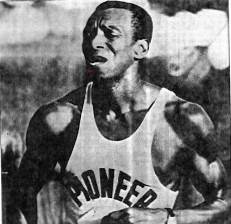

Ted Corbitt was invited to run and he wanted to go after the American record, although he may not have known what that record really was. His biographer wrote that it was Edgar Lloyd’s 6:13:58 in 1913. But that isn’t right, because Edgar Lloyd was British and set his best in England. Corbitt likely thought that the American record was the one set by Peter Golden set in 1883 of 7:29:47. But it appears that the track 50-mile America best at that time actually was held by Hugo Kauppinen, of 6:46:10, set in 1934. This demonstrates the confusion at the time regarding the best performances for 50-miles. Certainly they didn’t know that John Macy ran 5:29, solo, on the road in 1963.
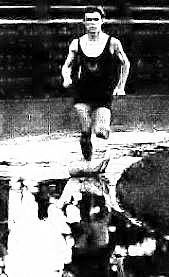

At Walton-on-Thames that day, there were thirteen starters. Because of overnight rain, turn one was under water and the back stretch was very slippery. Corbitt reported “The runners splashed and skidded through this for 29 miles by which time the grounds-keeper and volunteers had used brooms and giant foam rubber sponges to clear the water away. No one attempted to run the race in spikes.” Unfortunately the portable toilet was 40 yards off of the track under the stands. Each runner had a timekeeper and a lap recorder in the stands. Every five miles the runners’ times were announced over a public address system. An aid station was on the backstretch where runners could get sponges, orange juice, lemonade, tea, etc. or a crew member could give them their own concoctions.
The runners were on world record pace from start to finish. South African, Tommy Malone started out clocking sub-six-minute-mile pace. The leaders reached twenty-five miles in about 2:30. Corbitt said, “By this time all pursuers were in various stages of decline, each having retreated into his own private fight with fatigue.” Corbitt hung in about 10th place for the first half of the race but moved up. Alan C. Phillips, age 37, a virtually unknown runner, eventually went into the lead and observers commented, “he won’t last.” At 40 miles Phillips beat the 40-mile world record by 23 seconds. He started slowing at mile 45 and onlookers wondered if he could keep going fast enough to break the 50-mile record. He did it! His time was 5:12:39. Trotting through the infield he was mobbed by reporters and fans. Corbitt placed 5th, setting a new American track record of 5:54:15.
The 1967 American 50-Mile National Championship


A historic event began in 1911. A YMCA Thanksgiving Day Road Race, began to be held in Poughkeepsie, New York. While it was later called an “annual” event, there were years it wasn’t held, In 1921 the course ran along a trolley line. It was referred to as “the first affair of this kind to be held in some time.” In 1933 the event took hold again with three age-group divisions covering increasingly long distances. By 1943 the run became a true yearly event with a 2.5-mile junior division and a 5-mile senior division. In the years following, it migrating to five and ten-mile events. In 1964 a 20K event was added that was sanctioned by the AAU as a national championship, attracting some of the best runners in America.
In 1965 Ted Corbitt ran in the 20K and expressed interest to YMCA director, Don McKiernan for a longer distance race. McKiernan honored his request and added a 50-mile run to the 1967 event. The 50-miler ran on a loop course between Poughkeepsie and Hyde Park, run four times. and then included some smaller city tour loops four times in Poughkeepsie on the regular 20K course. This became the site for AAU’s 1967 50-Mile National Championship. Both Ted Corbitt and Jim McDonagh were injured and did not compete, so the door was open for someone else.
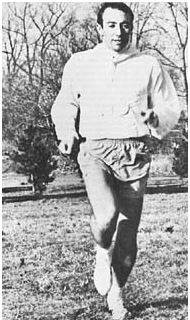

On race day there were 13 official starters. One of the runners was Tom Osler, of New Jersey, a math teacher at St. Joseph’s College in Philadelphia. He said as a child he was “a sickly little kid” and kept trying sports. As a senior in high school he finished third in the AAU one-mile national championship. Two weeks later he won the 25K championship and thus had true distance running talent. In early 1967 he won a national 30K race and finished 13th in the Boston Marathon with 2:29. Osler began preparing for the 1967 50-mile race during the summer and as he worked up his runs to 55 miles, he knew he could do it. He ran every afternoon after classes covering 75 to 80 miles a week and averaged 7.5 minutes per mile.


On race day, Osler, age 27, took control of the 50-miler early and even led British champion John Tarrant. The last 40 miles were run in a steady downpour of rain. Osler won with 5:52:33 and said, “I’m very happy with my time. I had planned to do about 6:10 or better to win. I felt perfect for the first 41 miles, like I had just started. Then a slow weariness set in. It got worse as I went along and in the last lap was quite bad. It was cold but my main worry was that it might freeze. This was a fine event – one of the best officiated races I ever saw.”
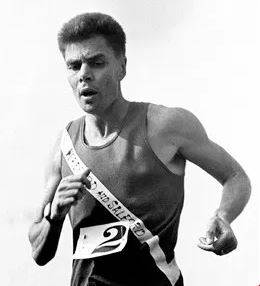



Rocklin, California 50-milers
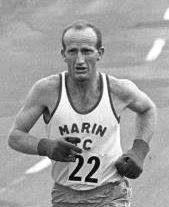

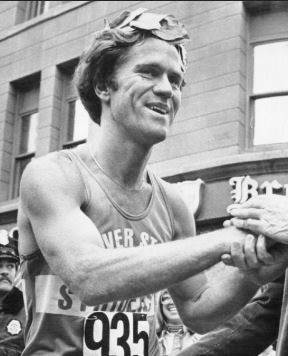

On February 18, 1968, at a 50-mile race was put on by the Pacific Association of the AAU, in Rocklin, California. Skip Houk, of Reno, Nevada, who later ran in the Olympic Marathon trials that year, dueled with the defending champion, Darryl Beardall, of Santa Rosa California and of Brigham Young University. The previous year, Beardall had won this event in 6:06:47 which was sponsored by American River Junior College.
In this 1968 event, the two runners jockeyed for the lead over the first 30 miles on the road course that consisted of five-mile loops at Sunset-Whitney Ranch. Houk hit the marathon mark in 2:43. After 30 miles Houk moved into the lead by nine minutes. During the final five miles, Beardall put on a fierce chase and only came up 11 seconds short. Houk won with 5:38:16, Beardall in second with 5:38:27.
AAU Controversy
But, it wasn’t over. Silly as it might sound, Houk was disqualified because he did not display his bib number on his jersey during this small race where everyone knew who he was. But it was an AAU requirement, so it is as if he never ran. It was thought that Beardall had set both an American best and world best on the road. (He was far off the world mark, and depending on what you want to count, nearly ten minutes shy of Macy’s 1963 unofficial mark).
Prominent athletes soon spoke out against the AAU for other reasons. The AAU would receive growing criticism regarding its governance, arbitrary rules, locking out some runners, and banning women from some competitions. In 1970 the New York City Marathon ignored AAU rules and allowed women to run. Congress would get involved and eventually in 1978 the AAU lost its governing influence, and moved to focus on youth activities.
The 1968 American 50-Mile National Championship
The 50-mile national championship in 1968 was again held at the Poughkeepsie Thanksgiving event on November 28. Ted Corbitt, age 48, competed. He was had been recovering from injuries incurred while trying to avoid being bitten by a dog. Thirteen runners started the 50-miler and the lead changed hands several times. After the second lap to Hyde Park and back, Corbitt decided that he would try to push ahead of his main competition, Wayne Van Dellen, age 31, of Woodlake, California. Corbitt said, “It was a gamble to see if I could win. I was running hard down the hills and I noticed he wasn’t. I really ran hard during the third big lap and I estimate I gained about 200 yards. But coming back on the fourth lap, I gave up the idea of winning again. He was as strong going up the hills as I was going down. He built up a 100-yard lead.”


Corbitt said, “I consider myself lucky to have run as well as I did. My goal, primarily, was to finish. I didn’t think I was going to beat Van Dellen. He’s fast, but he’s also one of the toughest runners in the country.” Van Dellen said, “I just couldn’t hold the pace. I never could run very fast downhill. I couldn’t see very well either. My eyes are still a little blurry.” Corbitt was surprised to get the win and added, “I’m thinking about retiring. I’ll just phase myself out gradually.”
The JFK 50
Other 50-mile races, independent of the AAU and the RRCA, started to emerge. The JFK 50 in Maryland originated as a 1963 Cumberland Valley Athletic Club run as part of the 1963 50-mile craze. It was one of very few 1963 50-milers to continue in America. It covered miles on the Appalachian Trail and the C&O towpath. But the race stayed mostly a club hike for the next several years. Finally in 1969 it caught the attention of runners and grew to 153 entrants, with 40 finishers. The winner was still relatively slow, with 8:32. In 1970 the race grew to 275 and very quickly would turn into the premier 50-mile race in the country.
50 Milers Going Forward
Because of the efforts of the RRCA and Ted Corbitt, the 50-miler took hold and could grow on its own. Races for the masses were established in the 1970s for anyone to complete in. Ultras were still in their infancy, but a toe-hold was established for the future.
Sources
- Jack Heath, Browning Ross: Father of American Distance Running
- John Chodes, Corbit: The Story of Ted Corbitt, Long Distance Runner
- “History of Road Runners Club of America”
- Andy Milroy, North American Ultrarunning: A History
- Andy Milroy, The Long Distance Record Book
- Andy Milroy, “The Origins of the Maraton”
- Chicago Daily News Almanac and Year Book of 1895
- S. Marshall, King of the Peds
- “The History of the London to Brighton Race,” Ultramarathon World, 1998
- Timothy Noakes, Lore of Running
- Leonard T. Olsen, Masters Track and Field: A History
- Boston Globe, Sept 10, 1872, May 18, 1879, May 17, 1880, Feb 11, 1881, Mar 3, 1884, May 23, 1934
- The Bury and Norwich Post (England), Oct 24, 1876
- The Rock Island Argus (Illinois), Sep 15, 1876
- Reynold’s Newspaper (London), Feb 13, 1876
- The Nottinghameshire Guardian, Apr 6, 1877
- Buffalo Morning Express, May 6, 1878
- The New Orleans Democrat, Oct 20, 1878
- New York Daily Herald, Mar 24, 1878
- Oakland Tribune, Aug 3, 1878
- The Cincinnati Enquirer, Dec 13, 1883
- Birmingham Daily Post (England), Dec 30, 1884
- The Gazette (Montreal), Feb 23, 1884, Mar 2, 1888
- Chase County Leader (Cottonwood, Kansas), Feb 28, 1884
- The Inter Ocean (Chicago, Illinois), Jun 1, 1875
- The Graphic (London, England), Apr 18, 1885
- The Morning Post (London, England), Apr 13, 1885, Nov 21, 1887)
- Louis Post-Dispatch, Jul 25, 1909
- The Allentown Democrat, May 14, 1913
- The Guardian (London), Oct 4, 1924
- Journal and Courier (Lafayette, Indiana), Aug 30, 1930
- Poughkeepsie Eagle-News, Oct 18, 1921
- The Jackson Sun (Tennessee), Jul 21, 1941
- The Observer (London, England), Dec 14, 1952
- Road Runners News Letter (England), Dec, 1952
- The Gazette, (Montreal), Sep 7, 1954
- Daily News, (New York), Oct 20, 1957
- The Corpus Christi Caller-Timer, Feb 18, 1963
- Long Distance Log, November 1966
- The Guardian (London), Oct 17, 1966
- Poughkeepsie Journal, Oct 6, 24, Nov 22,24, 1967
- Courier-Post (Camden, New Jersey) Dec 11, 1967
- Poughkeepsie Journal, 24 Nov 1967, 29 Nov 1968
- Oakland Tribune, Feb 26, 1968
- The Press Democrat (Santa Rosa, California), Feb 20, 1968
- Reno Gazette-Journal, Sep 10, 1969
